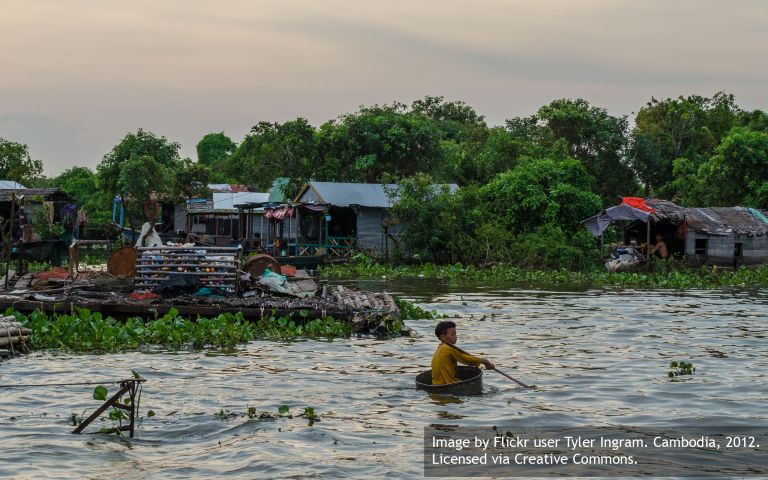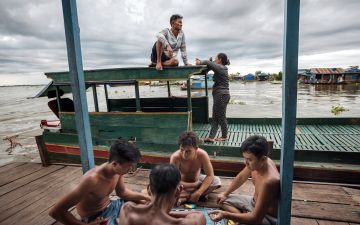For the tourists who drive large parts of the country’s economy, Cambodia’s floating villages—where tens of thousands of ethnic Vietnamese live on rafts and houseboats—are a fantasy come to life. Each dry season, thousands of backpackers ride small cruise boats to watch villagers play basketball on floating courts or gather to pray in floating temples. Tour guides describe the villages as curious products of an indigenous lifestyle.
In fact, the villages are improvised ghettoes to which the country’s largest minority has been unwillingly confined. They are a hangover of the mass killings and forced deportations of the Khmer Rouge era. The vast majority of Cambodia’s ethnic Vietnamese are undocumented, with no recourse to institutions that would allow them medical care, education, or—most crucially—the right to own or live on land. The inability to register births leads to a cycle of statelessness that passes from generation to generation, and leaves villagers vulnerable to random fines, extortion, mob violence, and forced relocation. As Cambodia modernizes, such encroachments are becoming more common.
Ben Mauk will report for The New York Times Magazine on a month in the life of one of Cambodia's floating villages, shedding light on the conditions of some of the most invisible members of the global stateless.



